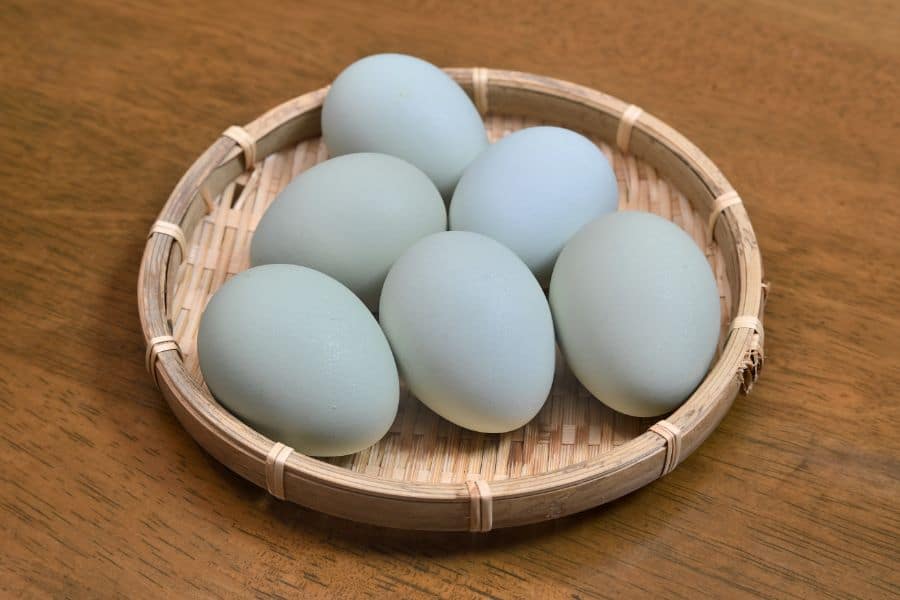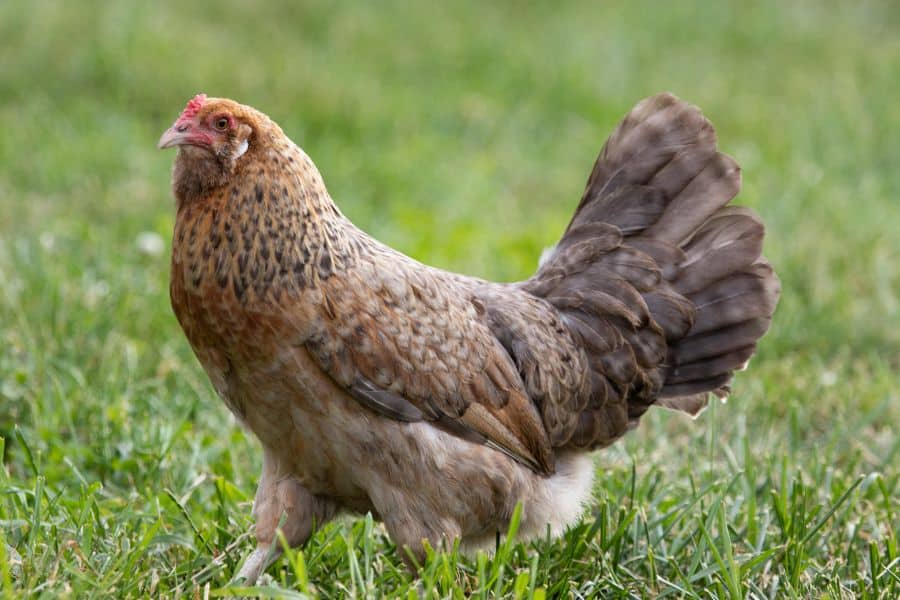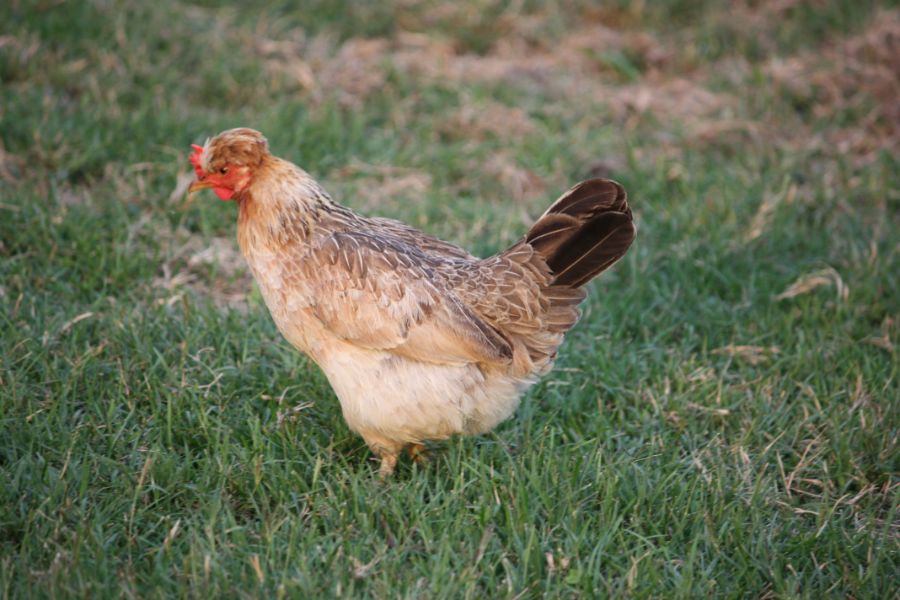Are you in the market for a worthwhile blue egg layer for your next big breeding project? Or do you wish to add a unique breed to your flock?
It’s no secret that blue eggs stand out from our usual traditional brown and white eggs. They have a distinct visual appeal that adds beauty to any Easter egg basket and interest in dishes.
Furthermore, some people even attest to their nutritious value and health benefits, though we have to disagree because colorful eggs and traditional eggs have no nutritional difference.
Nevertheless, having chickens that lay blue eggs is a win-win situation.
So, which chicken breeds lay eggs with a blue hue? Well, that’s why we are here.
We have researched the top chickens that lay blue eggs in the market and presented them in this comprehensive guide.
But before we look at them, let’s familiarize ourselves with how blue eggs come to be.
Why Do Chickens Lay Blue Eggs?
Our curious nature can’t allow something as unique as blue chicken eggs to go unexplained. For this reason, let’s explore the various explanations for this peculiarity.
While there’s no molecular basis for the eggshell color of chickens, scientists have identified that a retrovirus causes the blue eggshell.
The retrovirus interacts with the chicken’s DNA, causing the blue-color gene to be expressed in the uterus of blue-shelled hens.
In a nutshell, the blue-colored eggshells result from a genetic mutation in certain chicken breeds.
But how do the eggshells get the blue color?
Well, you first need to familiarize yourself with the eggshell pigmentation process.
Usually, the egg development process takes about 25 to 26 hours. But 20 hours is used for eggshell formation. Originally, the eggshell starts as white, the primary color of calcium.
As the process continues, cells within the uterus of blue-shelled hens release pigments, including oocyanin and biliverdins. These pigments permeate the interior and exterior sides of the eggshell, giving it a blue hue. The albumen and yolk retain their normal color.
If you buy a blue egg for hatching, scratch it to test its authenticity. The shell would retain its blue color even after scratching, unlike brown eggs ( they maintain a white eggshell interior).
10 Blue Egg Laying Chicken Breeds
With eggshell pigmentation out of the way, it’s time to tackle our main topic. Below, we’ve highlighted our top picks of blue-shelled chicken breeds.
1. Araucana
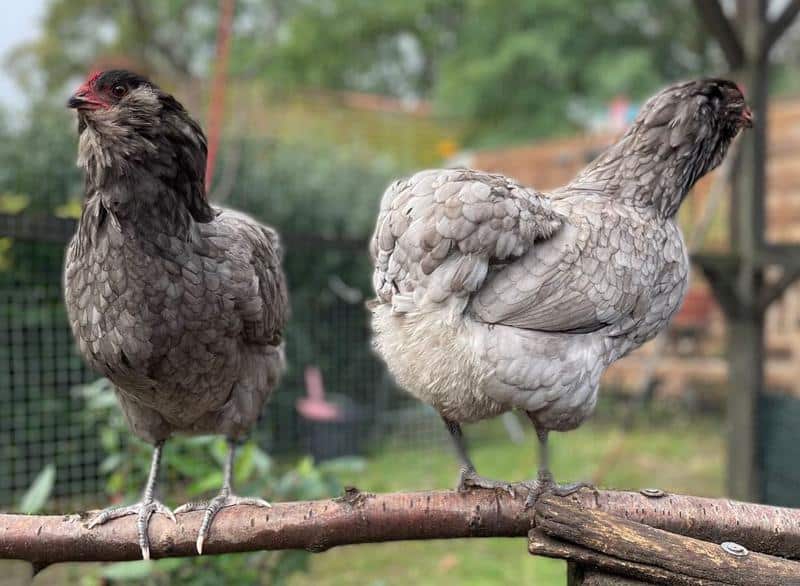
Opening our list is the Araucana. Known for its motherly instincts, the Araucana made its way into America from Chile in the 1930s. The breed quickly won the heart of poultry farmers and enthusiasts. And in the 70s, American Poultry Association (APA) recognized the breed.
The Araucana’s distinctive appearance makes the breed an excellent addition to any backyard. For one, Araucana hens stand upright and look more like wild birds. They also have comical feathers (or tufts) that protrude from their cheeks and lack long tail feathers like other chickens.
The selling point of these hens is their blue eggs, which makes them an excellent choice for individuals who love a rainbow-colored collection of eggs.
Araucanas might not be ideal for meat production, but you would love their egg-laying capabilities. Araucana hens can lay about 3 medium-sized blue eggs per week, and about 150 eggs annually. But don’t expect them to lay eggs when temperatures drop, especially during winter.
Are they friendly?
Yes! Many people can attest to the friendly nature of Araucanas, despite their flighty and nervous nature. These birds enjoy being handled and cuddled so your kids will enjoy having them around.
Additionally, Araucanas can live for about 6 to 8 years, allowing you time to get a return on your investment.
Characteristics
- Skin color – Yellow
- Comb type – Pea
- Purpose – Egg laying, meat, ornamental
- Backyard friendly – 9/10
- Rooster (adult weight) – 1.8 to 2.7 kg
- Hen (adult weight) – 2.3 to 3 kg
- Color–Black, silver duck wing, golden duck wing, red and white
2. Easter Egger
If you want more eggs and a low-maintenance chicken, opt for the Easter Egger. It is tolerant to cold and heat and has a life span of 6 to 8 years. Also, one Easter Egger can lay 200 to 280 medium-to-large-sized eggs. However, there is a catch when it comes to the color.
Easter Eggers are called rainbow layers because they lay different colored eggs, including green, brown, pink, olive, blue, and more. Easter Eggers that lay blue eggs get the gene from their Araucana or Ameraucana parents.
Besides unique colored eggs, Easter Eggers have a friendly, curious, and gentle disposition. They get along with other breeds, although they might get bullied by more assertive chicken breeds. So, if get Easter Eggers, keep an eye on them.
Unfortunately, hens from this breed rarely go broody. The girls dedicate most of their time to giving you those wonderful eggs. Therefore, if you want to increase your Easter Egger’s population, you might need to incubate the eggs or give them to a broody hen.
Characteristics
- Skin color – Yellow
- Comb type – Pea or single
- Purpose – Egg layer
- Backyard friendly – 10/10
- Rooster size – 2.3 to 3.6 Kg
- Hen size – 1.8 to 2.7 Kgs
- Color – Black, Brown, White, mixed
3. Ameraucana
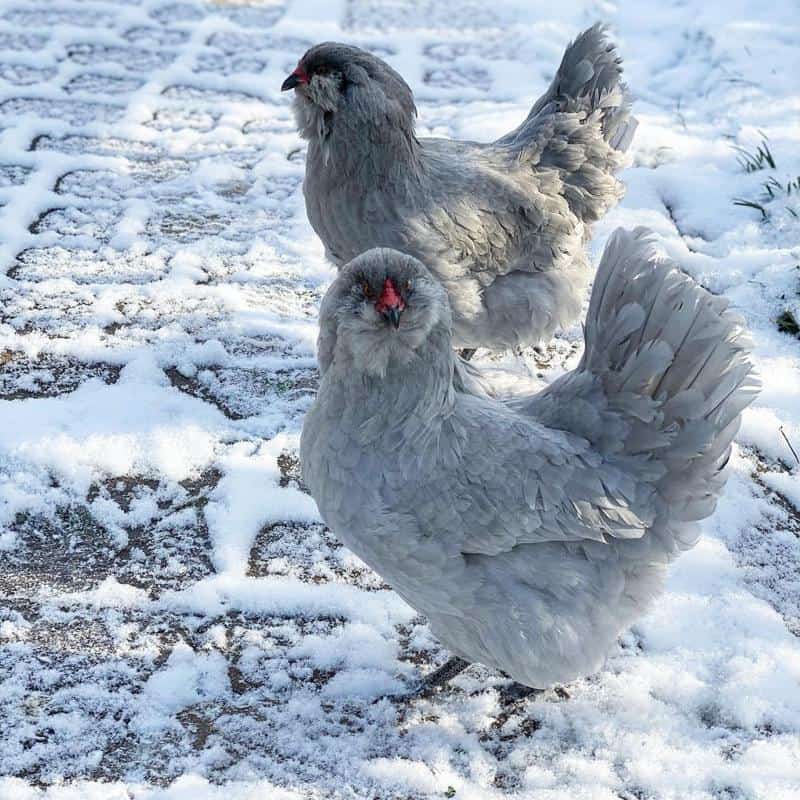
You’ve probably figured out there’s a relationship between this chicken breed and America.
You are right, Ameraucana originated from the US. The breed came about through a cross-breeding experiment undertaken by Mr. Keller from Pratt Experimental Farm in Pennsylvania.
Mr. Keller wanted to get rid of a lethal gene in Araucana (which caused the ear tufts) and create a new breed with blue-egg laying abilities. This dream became a reality in 1970 with the launch of the Ameraucana breed.
The breed became one of America’s favorite backyard chicken breeds. As a fact, the APA recognized Ameraucana as a legitimate breed in 1984.
Ameraucana hens can lay about 140 to 150 medium-to-large light or sky-blue eggs yearly. They are also hardy and can survive in cold and hot climates.
However, they might not withstand unbearably hot areas. So, if you live in such a location, you will be better off with heat-tolerant breeds like the Leghorn.
Characteristics
- Skin color – Yellow
- Comb type – Pea
- Purpose – Egg layer
- Backyard friendly – 8/10
- Rooster size – 2.9 to 3.9 Kg
- Hen size – 2.3 to 2.9 Kgs
- Color – Silver buff brown-red, White, Wheaten, Blue, Black, and Blue Wheaten
4. Dongxiang
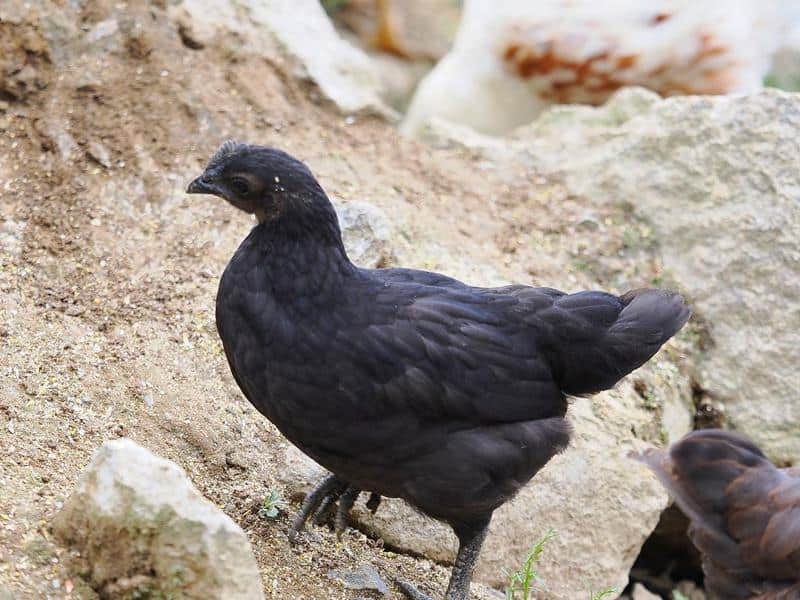
As the name suggests, the DongXiang chicken breed originates from DongXiang of Jiangxi province China. This breed is rarely found outside the Chinese border, which makes it extremely rare and valuable.
Like Ayami Cemani, this breed of chickens is fibromelanistic, meaning it has black skin, feet, bones, muscles, and organs. Because of this oddness, many Chinese nationalists believe the DongXiang meat is healthy and possesses healing properties.
In addition to their distinct coloration, DongXiang chickens produce only blue eggs (or green eggs, according to people from China). The hens can lay between 140 to 160 eggs annually. But variants like DongXiang of black and red combs and DongXiang partridge can produce approximately 200 eggs yearly.
Characteristics
- Skin color – Black
- Purpose – Meat and Egg laying
- Rooster size – 1.6 Kg
- Hen size – 0.5 Kg
5. Whiting True Blue
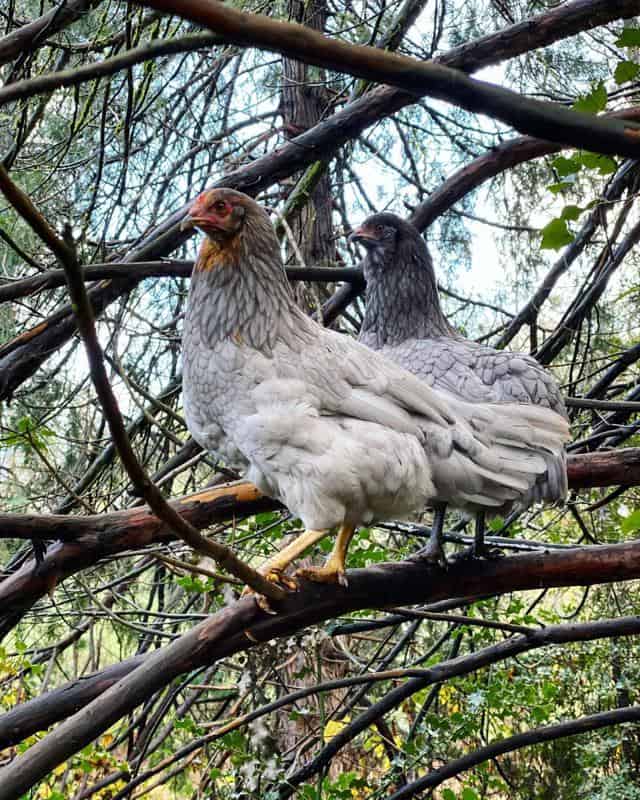
Who would have expected that a chicken initially bred for its feathers would be a great layer? The story about Whiting True Blue chicken starts with Henry Hoffman, a fisherman who used the fly-tying technique.
During the 1960s, Hoff man realized that the quality of commercially available chicken feathers was diminishing. Since he was taking care of his parents’ chickens, he decided to try out cross-breeding with the help of Professor Whiting.
The two dreamers started a business to produce high-quality chicken feathers for fly tying. They successfully achieved their goal and brought home a novel trophy, the Whiting True Blue.
The Whiting True Blue is a fast-growing bird with high-profit margins. The hens yield about 250 to 300 medium-to-large blue eggs. They also boasts varying feather patterns with unique coloration that add an element of beauty to your flock and backyard.
If you live in a hot area, you want to get this breed because it’s heat tolerant. Furthermore, the chickens have a friendly disposition and co-exist well with other breeds.
The only downside is that they don’t like being caged or confined in a small space. They are energetic and love to free-range.
Characteristics
- Purpose – Egg layer
- Backyard friendly – 9/10
- Rooster size – 3.2 Kg
- Hen size – 2.5 Kg
- Color – Grey, White, Black
6. Lushi
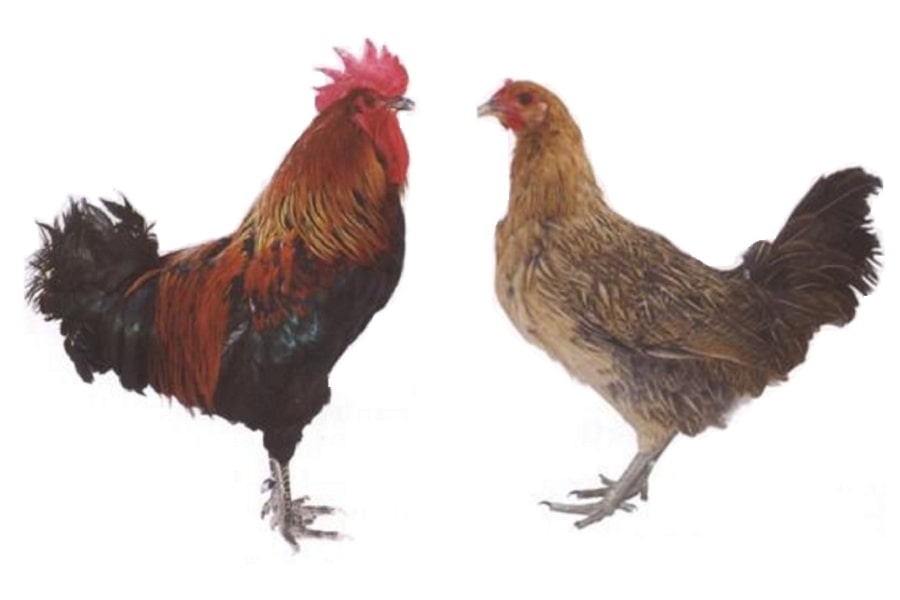
Little is known about the Lushi. The American Poultry Association does not recognize it as a breed. However, it is a breed primarily available in China.
The Lushi is a Chinese equivalent of the Easter Egger, but a lazy layer. It can give you a maximum of 100 blue or pink eggs annually.
Despite their small body, this breed of chicken looks stunning with feathers of varied hues. The females are leaner than the males and have a less-noticeable wattle and comb.
But that’s not all….
This breeds this breed adapts well to a range of environments. And many individuals seek it because it can thrive in small spaces and any climatic. Very few chicken breeds come with this trait.
But if you are going to raise these chickens, let them free-range. The reason for this is the birds are curious and often love to explore their surroundings when looking for food.
Characteristics
- Comb type – Single
- Purpose – Egg layer and for meat
- Rooster size – 1.8 Kg
- Hen size – 1.4 Kg
- Color – White
7. Cream Legbar
How about a breed whose chick’s sex can be determined once they hatch? Yes, that is the exclusive merit the Cream Legbar grants you.
This breed is a brainchild of Reginald Punnett and Michael Pease. They wanted to create a chicken breed to produce many eggs and auto-sex chicks. That means you can determine whether a Cream Legbar’s chick is female or male once it’s hatched.
A Cream Legbar can provide over 200 large blue or blue-green eggs annually. Also, they have a 6 to 8 years lifespan and can tolerate heat and cold, allowing you more time to reap the returns.
This breed is also friendly and calm as long as you do not keep the chickens confined. If you cage them without providing sufficient room to roam around and exercise, they might get anxious and become challenging to handle.
The Cream Legbar is officially recognized in the UK by the British Poultry Club. However, it is still rare in the United States and is yet to be recognized.
Characteristics
- Purpose – Egg laying
- Skin color – Yellow
- Comb type – Single
- Backyard friendly – 8/10
- Rooster (adult weight) – 3.2 kg
- Hen (adult weight) – 2.7 Kg
- Color – Cream and Grey
8. Arkansas Blue
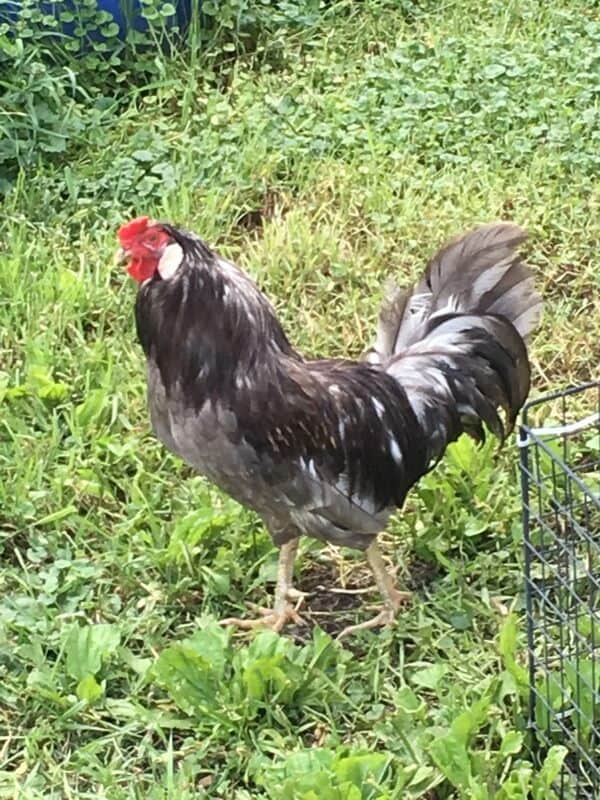
The Arkansas Blue is an experimental breed made by the University of Arkansas under the watch of Dr.Keith Bramwell. It is a hybrid of the Araucana and leghorn breeds, but looks more like the Sumatra chicken.
The breed is a super layer, capable of producing about 250 to 350 large blue eggs. But before getting an Arkansas Blue, beware the breed can be difficult to raise. The chickens can be troublesome and tend to panic easily.
The American Poultry Association still hasn’t approved this breed as an official breed because of its disposition.
Characteristics
- Purpose – Egg laying
- Skin color – Yellow
- Comb type – Pea
- Backyard friendly – 1/10
- Rooster (adult weight) – 2.7 Kg
- Hen (adult weight) – 1.8 to 2.3 Kg
- Color – Pale Blue or Gray
9. Azure Blue
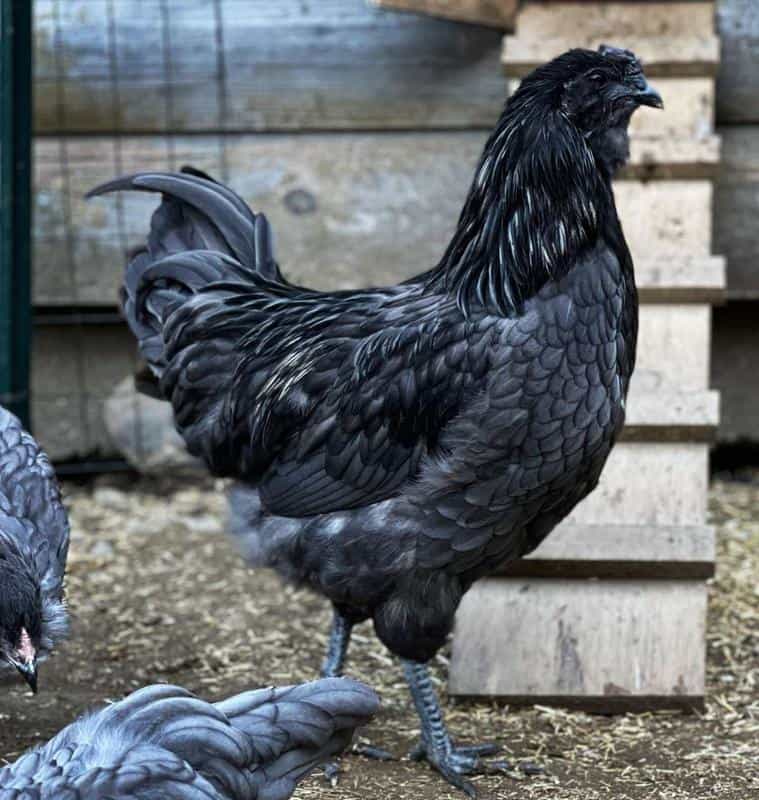
Small farmers would take advantage of the chance to own an Azure Blue. They are great egg layers, giving you about 300 large blue eggs annually.
Unlike DongXiang and Araucana, Azure Blues is not a pure breed. Instead, it’s an experimental breed created to produce abundant large blue eggs. It is typically a product of cross-breeding Cream Legbars, Sage Eggers, White Legbars, and Welsumers.
The hens and roosters have a small body and are very friendly and curious. They also rock pretty white plumage and can withstand harsh climates.
Characteristics
- Purpose – Egg laying
- Backyard friendly – 10/10
- Rooster (adult weight) – 2.3 Kg
- Hen (adult weight) – 1.8 Kg
- Color – Silver-white
10. Fibro Easter Egger
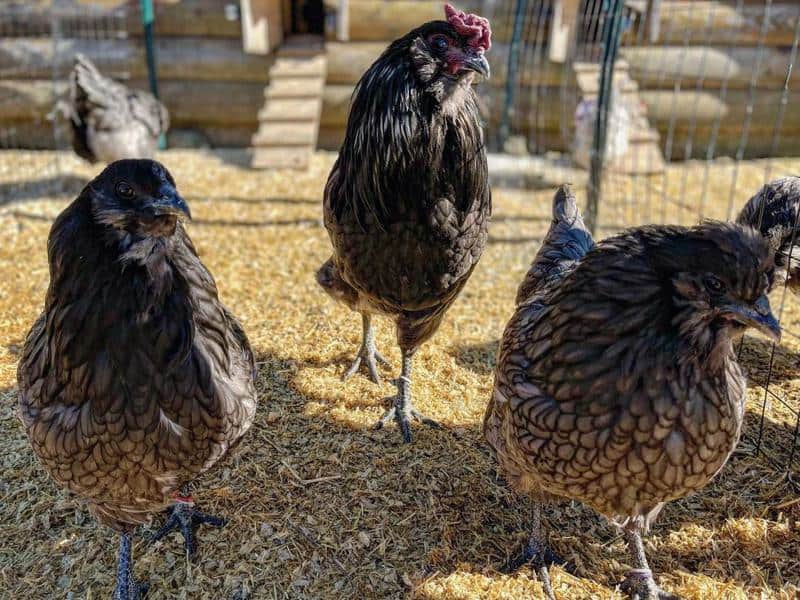
There is not much information about the Fibro Easter Egger because it is a new breed from the US. However, it has gained alot of popularity for its egg-laying capabilities.
It can lay between 200 to 260 medium or large eggs with varying coloration, ranging from olive green to turquoise blue.
The “Fibro” in the name suggests the breed belong to a group of bird with Fibromelanosis. This is a genetic mutation that causes the darkening of feathers, skin, legs, muscles, and organs. But the depth of darkness is not as astonishing as in Ayami Cemani.
People also praise Fibro Easter Eggers for their calm and docile, meaning they can make excellet additions to any backyard flock.
Characteristics
- Purpose – Egg laying
- Color – Black
Read More:
Take Away
Chickens that produce blue eggs have existed across the world since ancient times. However, their numbers are limited because of the lethal gene associated with the blue-egg gene.
Fortunately, scientists have found a way to eliminate the faulty gene. And thanks to them, today you can buy blue-egg laying chicken breeds with amazing traits, like Ameraucana, Easter Egger, Fibro Easter Egger, and others.
That said, we hope our list will help you select the ideal breed to add to your backyard flock.
